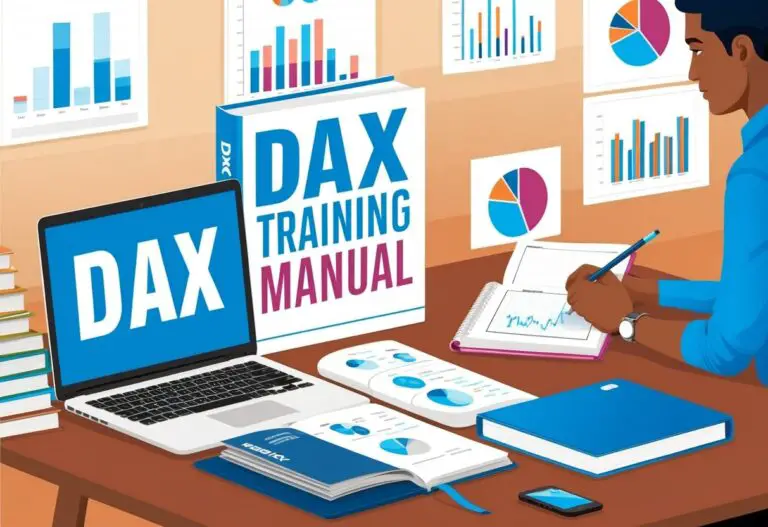Why data visualization is important in business analytics
Data visualization involves presenting data in graphical or visual formats like charts, graphs, maps, and other visual elements. It’s a way to represent complex information in a more accessible and understandable manner.
Rather than just looking at numbers or tables, data visualization allows people to see trends, patterns, and relationships within the data. It helps in making sense of large datasets, identifying outliers, and communicating insights effectively.
Data visualization tools and techniques can vary widely, from simple bar graphs and pie charts to more complex interactive visualizations using software like Tableau, Power BI, or programming languages such as Python with libraries like Matplotlib or Plotly. The goal is to make data more comprehensible, actionable, and easier to interpret for different audiences.
Best practices of data visualization
- Understand Your Audience: Tailor your visuals to the audience’s expertise level and their specific needs. What might be clear to one group might not be to another.
- Simplify Complexity: Keep it simple. Remove clutter and focus on the key message. Use clear, concise labels and avoid unnecessary elements.
- Choose the Right Visualization Type: Select the most appropriate chart or graph that effectively represents your data. For instance, use bar charts for comparisons, line charts for trends over time, and pie charts for parts of a whole.
- Use Color Wisely: Utilize color meaningfully, using it to highlight important data points or categories. Ensure it’s accessible for all users, considering color blindness and readability.
- Provide Context and Explanation: Accompany your visualizations with explanations or captions. Contextualize the data to help viewers understand its significance.
- Maintain Consistency: Maintain consistent design elements like font, colors, and scales across your visualizations for coherence and easier comparison.
- Interactivity (if applicable): For digital or interactive visualizations, consider adding interactive elements for users to explore the data further without overwhelming them.
- Emphasize Key Insights: Direct attention to the most critical points or trends within the data by utilizing visual hierarchy, such as size, color, or position.
- Test and Iterate: Before finalizing, test your visualizations with a small sample of your audience to ensure they understand and interpret the data as intended. Iterate based on feedback.
- Data Integrity and Accuracy: Always ensure the data presented is accurate and reliable. Misleading visualizations can cause confusion or misinterpretation.
Applying these practices can significantly enhance the effectiveness of your data visualizations, making them more impactful and easier to comprehend.
Top data visualization tools
ome of the top data visualization tools widely used for their versatility and features include:
- Tableau: Tableau is known for its user-friendly interface and powerful capabilities to create interactive visualizations. It allows users to connect to various data sources and generate insightful dashboards.
- Microsoft Power BI: Power BI offers robust data visualization and business intelligence tools. It enables users to create interactive reports and dashboards, and it’s integrated well with other Microsoft products.
- Python (with Matplotlib, Seaborn, Plotly): Python is a versatile programming language used for data analysis and visualization. Libraries like Matplotlib, Seaborn, and Plotly provide a range of options for creating static, interactive, and publication-quality visualizations.
- Google Data Studio: Google’s Data Studio is a free tool for creating interactive dashboards and reports. It integrates seamlessly with other Google products and allows for easy sharing and collaboration.
Each of these tools has its strengths and caters to different user preferences, skill levels, and specific data visualization needs. Choosing the best one depends on factors like data sources, required features, ease of use, and scalability.
How to choose best tool for data visualization
Choosing the right data visualization tool depends on several factors. Here’s a guideline to help decide:
- Data Sources and Compatibility: Consider the sources of your data. Some tools might be better suited for specific data formats or databases. Ensure the tool can easily connect to and handle your data sources.
- Ease of Use and Learning Curve: Assess your team’s proficiency and the tool’s learning curve. Some tools are more user-friendly and require less technical expertise, while others might have a steeper learning curve but offer more advanced functionalities.
- Visualization Capabilities: Evaluate the types of visualizations you need. Some tools specialize in particular chart types or interactive features. Ensure the tool can create the specific visuals required for your analysis.
- Interactivity and Customization: If you need interactive dashboards or highly customized visuals, look for tools that offer these features. Consider how much flexibility the tool provides for customization.
- Cost and Scalability: Consider the tool’s cost, especially if you’re working with a budget. Some tools offer free versions or trials, while others are more expensive, especially for advanced features. Also, assess whether the tool can scale as your data needs grow.
- Collaboration and Sharing Features: Check if the tool allows for easy sharing of visualizations and collaboration among team members. Features like real-time sharing, embedding, or exporting to various formats can be crucial.
- Support and Community: Look into the availability of support, documentation, and community forums. A strong user community can provide valuable resources and support when encountering issues.
- Integration with Other Tools: Consider whether the tool integrates well with other software or platforms your team uses. Seamless integration can streamline workflows and data processes.
By assessing these factors against your specific requirements and considering the preferences and expertise of your team, you can better identify which data visualization tool aligns best with your needs. Sometimes, a combination of tools might be used to leverage the strengths of each for different aspects of your data analysis and visualization workflow.



One Comment
Comments are closed.